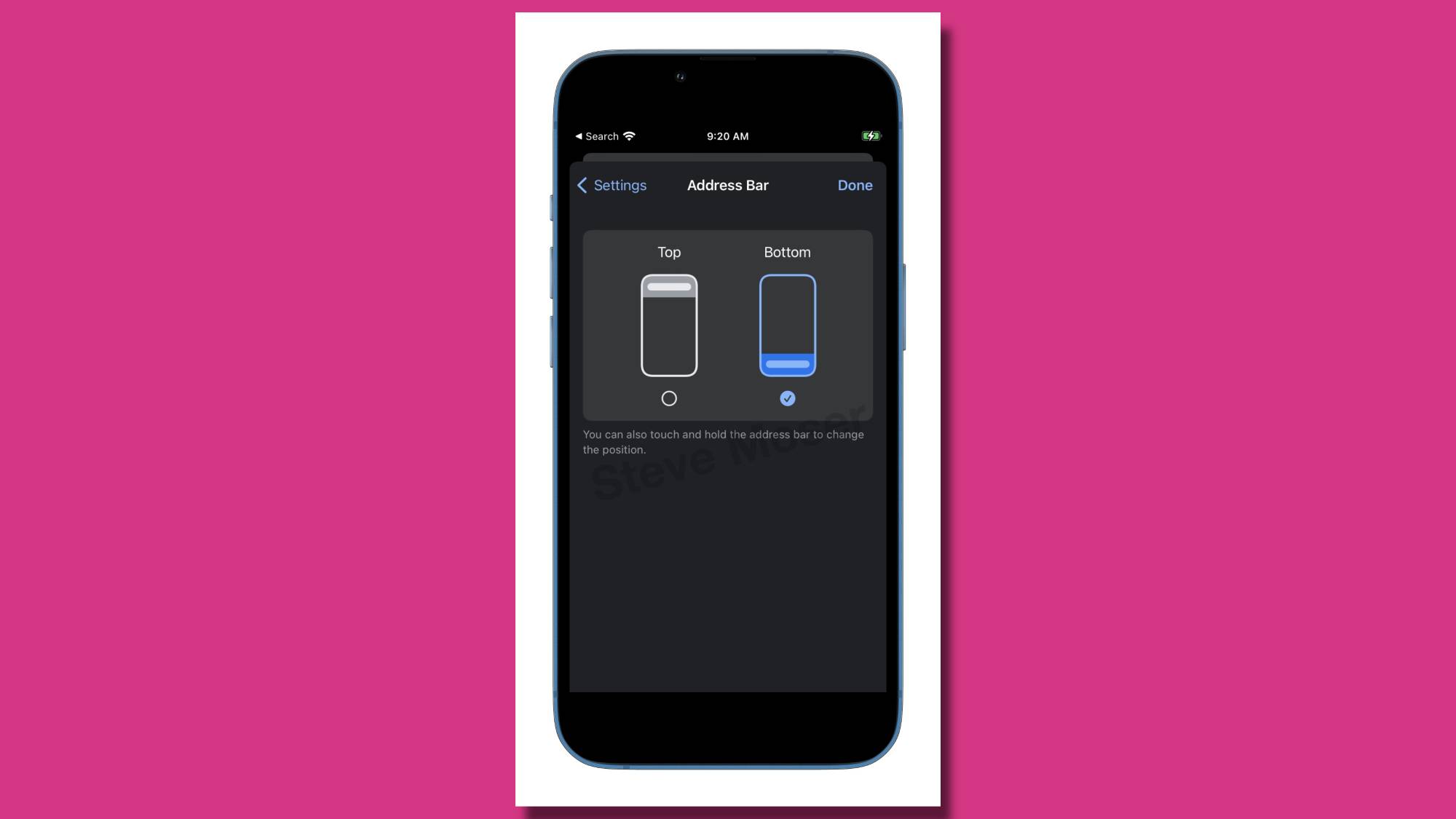After nearly two years since Apple’s Safari browser moved the address bar to the bottom of the screen, Google Chrome’s iOS version is making the same move.
The new feature, called Bottom Omnibox Setting, is in the testing phase in the Testlfight version of the Chrome app on iOS, which was first reported on by iOS developer Steve Moser. Along with revealing the name and status of the feature, Moser also posted a screenshot of what the choice looks like in the settings menu, with users able to switch between the address bar being at the bottom or the top of the screen.

In order to make the address bar switch, users simply need to go to Settings, then Address Bar on Chrome’s test version. However, for those using the TestFlight version of Chrome, you need to enable the “chrome://flags/#bottom-omnibox-steady-state” flag. The feature hasn’t been rolled out to all users yet, but even this limited release should be useful to those who want a more uniform interface on Safari and Chrome, as well as those with larger screens since bottom address bars are closer to your thumbs on big displays.
According to Android Police, Google attempted this same feature for Chrome on Android back in 2020, but discontinued it, eventually.
Chrome has been pushing down plenty of new features
Google has been hard at work updating and expanding its Chrome browser with new features and tools, many of which are meant to improve user safety. One such change is the plan to ‘proactively highlight’ Chrome extensions that have been made unavailable in the Chrome Web Store.
There’s also Google’s ‘Privacy Sandbox’ project, which will be the end of third-party cookies in the browser. Users will have six new APIs made available to them in order to accept targeted advertising without the need for privacy-invading ads. Another feature could provide an in-line preview of the contents of a link, which would give users a better view of what website they’re about to visit before clicking on a link.
Not every change has been accepted with open arms, though. Google introduced a Web Environment Integrity (WEI) API, which would allow servers to “evaluate the authenticity of the device” in order to prevent some types of fraud. But it’s been met with plenty of backlash, not only from users with concerns about surveillance and discrimination, but also from several browser makers including Brave, Firefox, and Vivaldi.
Chrome has been making plenty of moves and most of them are positive. But as long as it continues to gather and control user data in such an iron-fisted way, it’ll still deal with controversies.
No comments:
Post a Comment